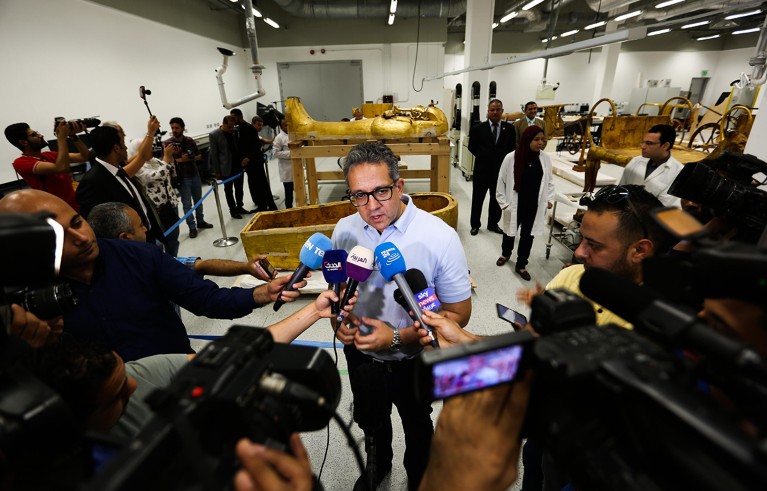UNESCO stands at a crossroads — researchers must back its new leader
Summary
UNESCO’s executive board has nominated Egypt’s Khaled El‑Enany as the agency’s next director‑general, a milestone as the first leader from an Arabic‑speaking country and the first from a low‑ or middle‑income country in nearly 30 years. He will take over from Audrey Azoulay amid a severe funding and political crisis affecting the UN system.
Member‑state arrears — notably the United States (around US$1.5 billion) and China (nearly $600 million) — and the US administration’s withdrawal from UNESCO and retreat from international agreements have created a major budget shortfall for the UN. Secretary‑General António Guterres is preparing cuts of roughly one‑fifth of the UN budget, with proposals to merge agencies, close offices and create a cross‑UN sustainability department.
El‑Enany faces a delicate diplomatic task: defending UNESCO’s budget and core missions in education, science and culture while being part of the UN leadership expected to implement efficiency measures. He inherits a solid platform — UNESCO’s work on open science, AI guidance for education and its comprehensive science reporting — and could exploit new engagement opportunities in quantum technologies and synthetic biology to reconnect estranged partners such as the United States.
Key Points
- Khaled El‑Enany has been nominated as UNESCO’s next director‑general and is the first Arabic‑speaking and first low/middle‑income country leader in decades.
- The wider UN is amid a major budget crisis; the UN’s US$3.7 billion annual budget is hit by large arrears from major contributors.
- The United States and China together owed more than US$2 billion as of April, with the US alone around US$1.5 billion; the US has signalled withdrawal and reduced engagement with some UN agendas.
- António Guterres plans cuts of about one‑fifth of the UN budget, including agency mergers and a new cross‑UN sustainability department — moves likely to affect UNESCO’s structure and funding.
- El‑Enany must balance two pressures: protect UNESCO’s programmes (education, science, culture, open science and AI guidance) while implementing broader UN reforms.
- Opportunities exist to engage the United States through high‑tech science areas (quantum technologies, synthetic biology) and through diplomatic links — Egypt’s long‑standing ties to the US may help.
- History offers precedent: previous US withdrawal in the 1980s led to long absences and damage to UNESCO; El‑Enany will need strong backing from researchers, policy-makers and diplomats to avoid a repeat.
Context and relevance
Why this matters: UNESCO is a central global actor for open science, research policy and education standards. Cuts or diminished engagement would put key initiatives — open access, guidelines on AI in education, global science assessments and capacity building — at risk. Researchers should care because UNESCO shapes international research norms, data and collaboration frameworks that affect funding, mobility and the global science environment.
How it fits broader trends: the piece links geopolitics (US‑UN relations, budget politics) with science policy (open science, AI guidance) and emerging technologies (quantum, synthetic biology). It signals that support for international research infrastructure is now as much about diplomacy as it is about evidence and policy.
Why should I read this?
Short and blunt: if you care about funding, global research standards or the future of international science collaboration, this is worth five minutes. It explains who’s taking the helm at UNESCO, the real budget crunch behind the headlines, and why researchers — not just diplomats — must rally behind the agency now or risk losing programmes that matter to the research community.
Author style
Punchy: the editorial both warns and urges — it makes clear that this is a make‑or‑break moment for UNESCO and that researchers’ backing could be decisive.
Article metadata
Article Date: 15 October 2025
Article URL: https://www.nature.com/articles/d41586-025-03306-y
Article Image: Primary image (El‑Enany, 2019)

